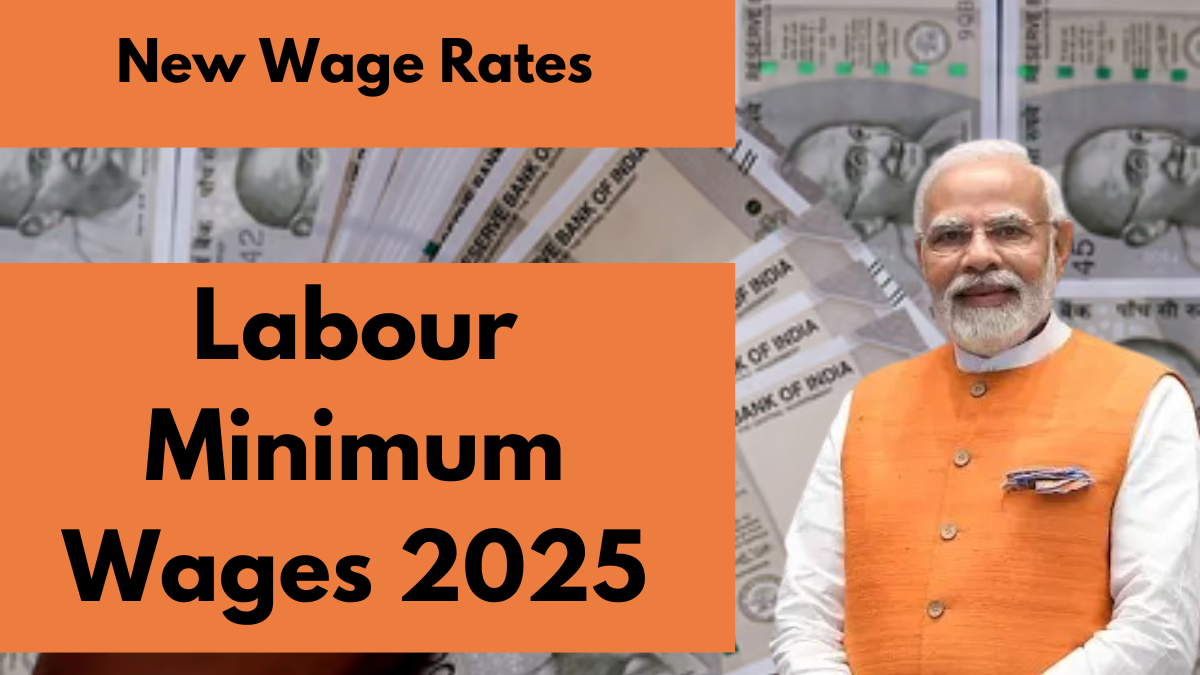On January 26, 2025, the Government of India implemented revised minimum wage rates to uplift the living standards of millions of workers across the country. This policy aims to address economic challenges, protect workers from exploitation, and contribute to the nation’s economic growth. By ensuring fair pay, these changes aim to foster both individual welfare and broader economic stability.
This article delves into the concept of minimum wages, the specifics of the 2025 revisions, their broader implications, and India’s transition toward a “Living Wage.”

What Is Minimum Wage?
Minimum wage refers to the legally mandated lowest remuneration that an employer must pay to their employees. Introduced under the Minimum Wages Act of 1948, this measure was designed to prevent worker exploitation and guarantee a basic standard of living.
A minimum wage plays a crucial role in:
- Reducing income inequality.
- Empowering workers to secure essential goods and services.
- Encouraging fair labour practices in various industries.
It serves as a foundational element of labour rights, reflecting the nation’s commitment to social and economic justice.
Also Read: Retirement Age Hike: Employee Retirement Age Increased as New Order Issued
Key Features of the New Minimum Wage Rates for 2025
The revised minimum wages introduced in 2025 represent a significant increase from the previous rates. These adjustments were made after considering inflation trends and the rising cost of living. Below is a detailed table outlining the new daily wages for different labour categories in Delhi:
| Labor Category | Daily Wage (₹) |
|---|---|
| Unskilled Laborers | 695 |
| Semi-Skilled Laborers | 767 |
| Skilled Laborers | 843 |
It’s important to note that these rates are specific to Delhi and may vary across states, as local governments adjust wages to align with regional economic conditions.
The Rationale Behind the Wage Revision
The revision of minimum wages addresses multiple economic and social objectives:
- Addressing Inflation: The rising cost of goods and services has necessitated a proportional increase in workers’ incomes to maintain purchasing power.
- Enhancing Worker Welfare: By providing a fair wage, the government aims to improve workers’ quality of life, ensuring access to basic needs such as food, healthcare, and education.
- Boosting Economic Growth: Increased wages often lead to greater consumer spending, which can stimulate economic activity and contribute to GDP growth.
From Minimum Wage to Living Wage: A Vision for 2025 and Beyond
While minimum wages set a baseline, the concept of a “living wage” takes worker welfare a step further. A living wage ensures that employees earn enough to lead a dignified life, covering not only basic needs but also education, healthcare, and savings for unforeseen expenses.
India’s move toward implementing a living wage demonstrates a commitment to reducing poverty and fostering long-term economic resilience. Achieving this goal will require collaboration between the government, employers, and labour unions.
Also Read: DA Arrears Update: Government’s Key Decision on 18 Months Pending Dues for Central Employees
Benefits of Transitioning to a Living Wage:
- Improved Productivity: Fair compensation can enhance worker morale and efficiency.
- Reduced Turnover: Employees are less likely to leave their jobs, reducing hiring and training costs.
- Poverty Reduction: A living wage directly tackles poverty by increasing disposable income.
Challenges in Implementing Minimum Wage Policies
Although the revised rates mark progress, challenges persist:
- Regional Variations: Differences in the cost of living across states can complicate uniform wage policies.
- Enforcement Issues: Ensuring compliance by employers requires robust monitoring and legal frameworks.
- Economic Strain on Small Businesses: Smaller enterprises may struggle to afford higher wages, necessitating government support or subsidies.
Addressing these challenges will require innovative solutions and consistent policy evaluation.
Conclusion
The revised minimum wages for 2025 reflect a significant step toward ensuring economic justice and improving workers’ quality of life. While challenges remain, these changes highlight India’s dedication to fostering a fair and inclusive labour market. By addressing both immediate wage concerns and long-term goals like the living wage, the nation is paving the way for a more equitable future.
Frequently Asked Questions (FAQ)
1. What is the current minimum wage in India?
The minimum wage varies by state and labour category. For example, in Delhi, the daily rates in 2025 are ₹695 for unskilled, ₹767 for semi-skilled, and ₹843 for skilled labourers.
2. Why are minimum wages revised?
Revisions are made to account for inflation, economic growth, and changes in the cost of living, ensuring workers can meet their basic needs.
3. How is a living wage different from a minimum wage?
A living wage goes beyond the minimum wage, aiming to provide workers with enough income to lead a dignified life, including savings and access to education and healthcare.
4. Where can I find updated information on minimum wages?
For the latest updates, visit the official Ministry of Labour and Employment website or contact your local labour office.
5. What are the penalties for non-compliance with minimum wage laws?
Employers who fail to adhere to minimum wage regulations may face fines, legal action, or both, as per the provisions of the Minimum Wages Act.
For accurate and updated information, always refer to official resources or consult labour authorities.
Click here to learn more.
Akesh is a furniture expert with years of experience in design and craftsmanship. Specializing in sustainable materials, he shares his expertise to help people create stylish and functional living spaces.
